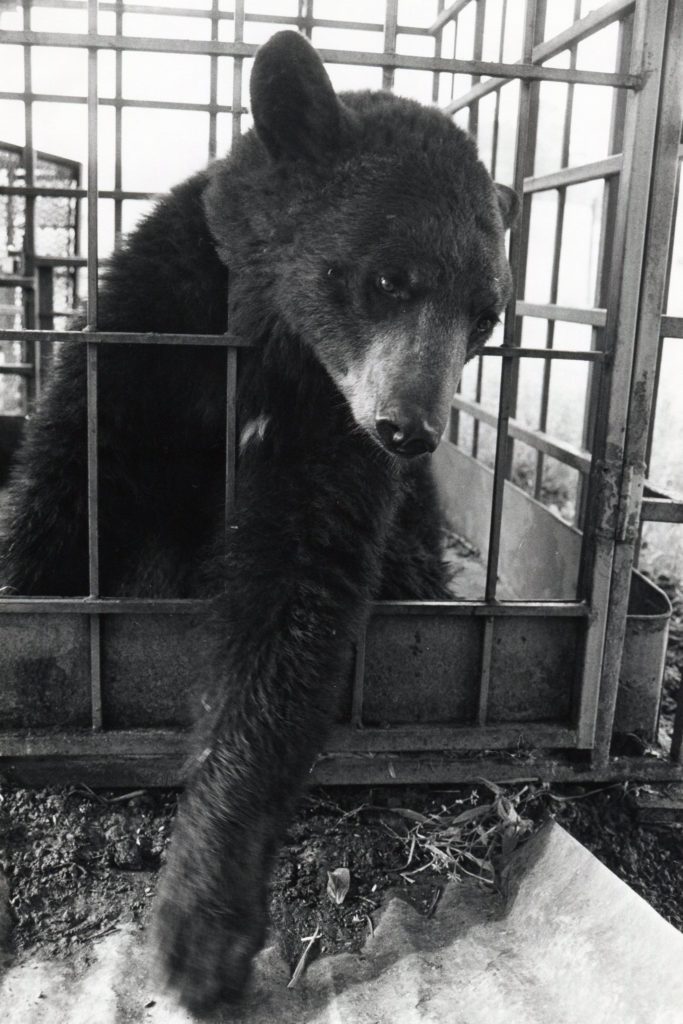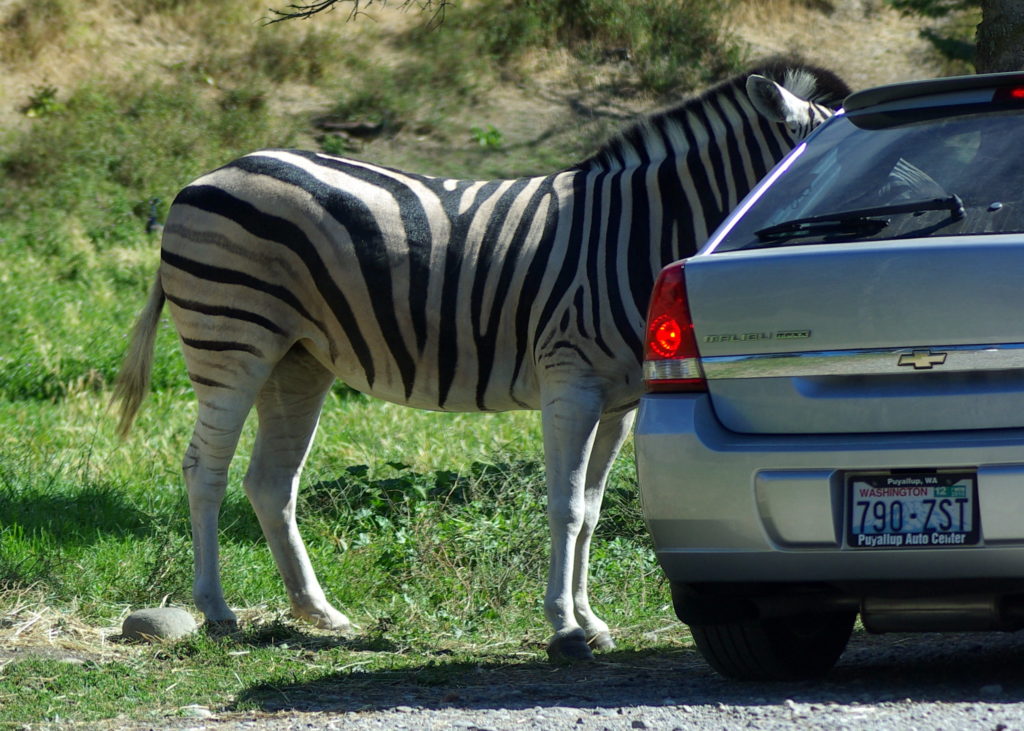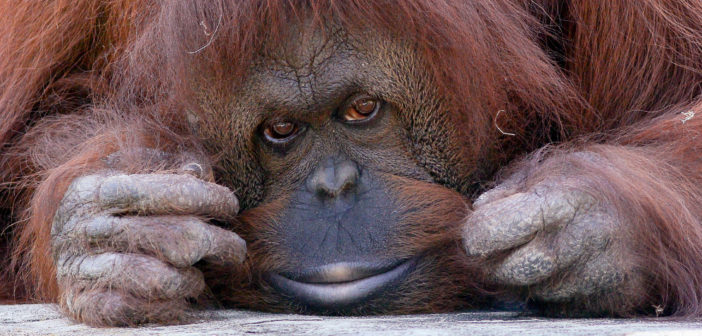When you look into the eyes of animals at the zoo, you often see boredom, sadness, blank stares, broken spirits, frustration and despair. Animals in zoos are forced to live their entire lives in captivity—in small unnatural spaces or cages, surrounded by artificial environments, where noises overwhelm and frighten them, cameras flash relentlessly, teenagers taunt and tease and throw things at them, and vocal crowds stress them. They are deprived of everything that is natural and instinctual for them—everything they desire in life.
Captured in the wild and zoo breeding programs
Animals in zoos haven’t had a good past. They may have started out their journey to a zoo by being captured in the wild, ripped away from their families and shipped long distances in isolation to a completely unnatural, foreign environment. Or they are part of a zoo breeding program, where they are born into captivity and transferred from one zoo to the next, often over and over again. Many of these animals are highly social, and they are not given a chance to bond with others or are ripped away from their bonded friends, and most are isolated and lonely, leading to obsessive and abnormal behaviors.
Animals are treated as commodities in zoos. Their sole purpose is to draw crowds and generate income for the zoo. But this philosophy of capturing from the wild, or breeding in captivity, all to confine wild animals for entertainment, needs to be reconsidered and changed. Here is more about where zoo animals come from.

Unnatural, unhealthy conditions
Many animals in the wild travel long distances and are highly mobile, but in a zoo they are confined inside cages, barns, and small enclosures. They may be exposed to weather that is unnatural for their species. Some zoos close in winter months due to extreme temperatures and snow, and then animals are forced inside to live inside in cramped and often barren enclosures.
Captive animals often lose their minds and develop a psychotic condition termed “zoochosis,” where the animal may injure themselves, pull out their fur or feathers, lick endlessly to comfort themselves, pace or rock back and forth. This sad behavior is rampant in zoos, across many species. This is so common, in fact, that zoo veterinarians will sedate their animals with antidepressants and anti-psychotic drugs, so they can better endure their suffering. Is this what we want? Is this right? Please don’t support the cruelty of zoos.
Roadside and traveling zoos
These are the worst form of zoos. Many are illegitimate, incompetent in animal care, and underfunded so animals are poorly cared for or starving. The animals experience constant stress and misery in these zoos—they are kept in extremely small, often filthy, barren cages or concrete pens or are immobilized on a chain, and live in completely unnatural environments.

These roadside exhibits are sometimes called “animal sanctuaries,” but they are a far cry from an actual sanctuary. True animal sanctuaries that rescue and rehabilitate animals never breed or sell animals. They exist purely to provide a needed safe, healthy home for animals. The sanctuary asks nothing of the animal, and would never breed. True animal sanctuaries’ mission has nothing to do with profit, only with animal welfare.
With constant travel comes constant stress. Animals in traveling shows spend their entire lives confined to entertain the public. But this is not entertainment. These animals experience endless and overwhelming boredom, despair, loneliness and often abuse from the people caring for them. Most of them never receive proper veterinary care or preventative care, and they often die prematurely. In the United States, there is almost no regulation or enforcement of regulatory and animal welfare codes. Only 100 USDA officers manage 8600 licensees, which means very little, if any, oversight and regulation.
Drive-through safari wildlife parks
In the U.S., these are often called wildlife parks, game parks, safari parks or drive-through wildlife preserves. What might not be so obvious from the outside is that many are profiting off of breeding and selling wild animals to the pet trade or other exotic animal dealers, producing yet more suffering and an overpopulation of unwanted animals. Some parks are known for holding surplus animals out of view. If you are allowed to hold or pet a baby animal, chances are excellent that that facility breeds exotic animals and sells them for profit.
One park was found to be breeding bears to send them to slaughterhouses so their gall bladders and other body parts could be sold illegally in Asia. The park essentially ran a bear “factory farm.” Another wildlife drive-through safari bred and sold tigers, shot them off-site and sold their hides. Some parks sell wild animals to captive safari hunting businesses, mainly located in the southern U.S., with many in Texas. Another park forces elephants to perform for visitors.

Petting zoos
Wild animals used in petting zoos are also being used for profit. Living in a petting zoo causes the animals undue stress, inadequate rest periods, lack of water, lack of proper food and nutrition, and forces the animal to live in an unnatural environment where they have to interact with people all day. Often these animals can snap due to constant touching and handling against their wishes. They are wild animals and should never be petted or handled. The spread of infection and bacteria from petting wildlife is also quite common.
What you can do
- Don’t patronize zoos, wildlife safaris or amusement parks that have wild animals. Boycott them! Share about the misery of zoos and safaris with friends and family and ask them not to ever buy a ticket.
- Watch nature films instead. Learn about animals by watching wildlife documentaries, where you can observe animals in their natural habitats.
- Parents, explain to your children why zoos and safaris can be bad places for animals and why you don’t support them.
- Visit an animal sanctuary instead. Go to an accredited animal sanctuary where animals are well cared for and the sole purpose is the rescue of animals from neglect and cruelty.
- Track animal abuse. If you visit a zoo, track any abuses or substandard conditions using this Zoo Check Form from Born Free USA or this Animal Alert from People for the Ethical Treatment of Animals (PETA).
This article originally appeared on the Humane Decisions website.
Featured image: an orangutan at the Columbus Zoo. Image credit Mark Dumont, CC BY-SA 2.0.





